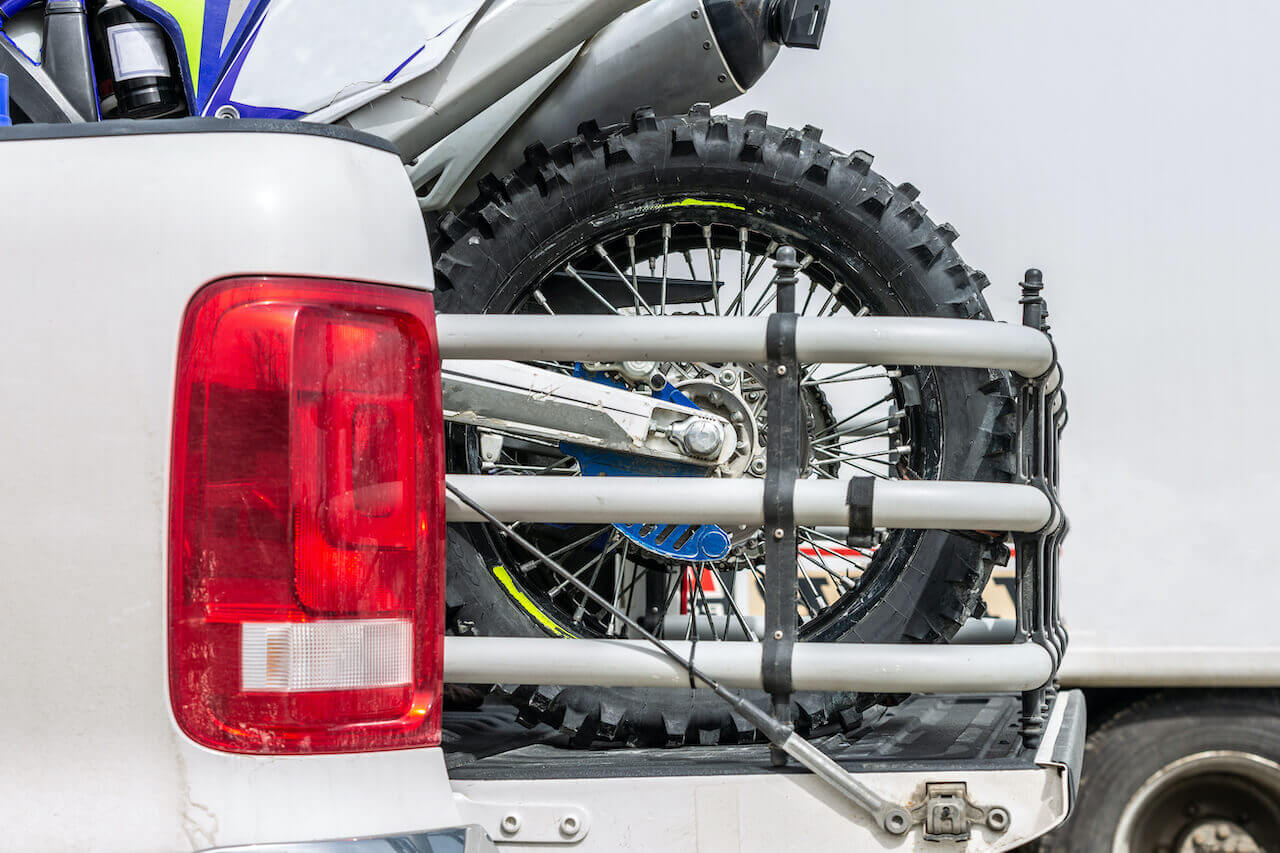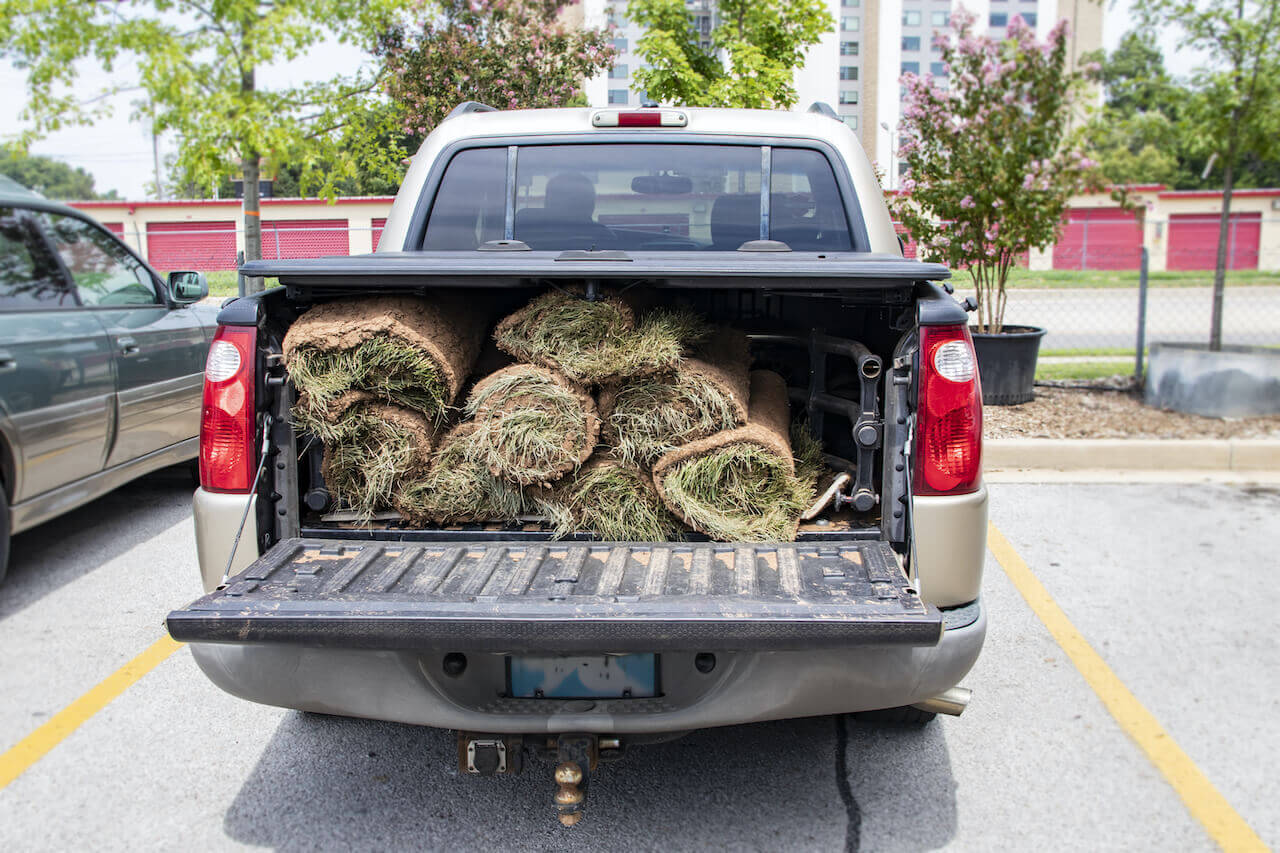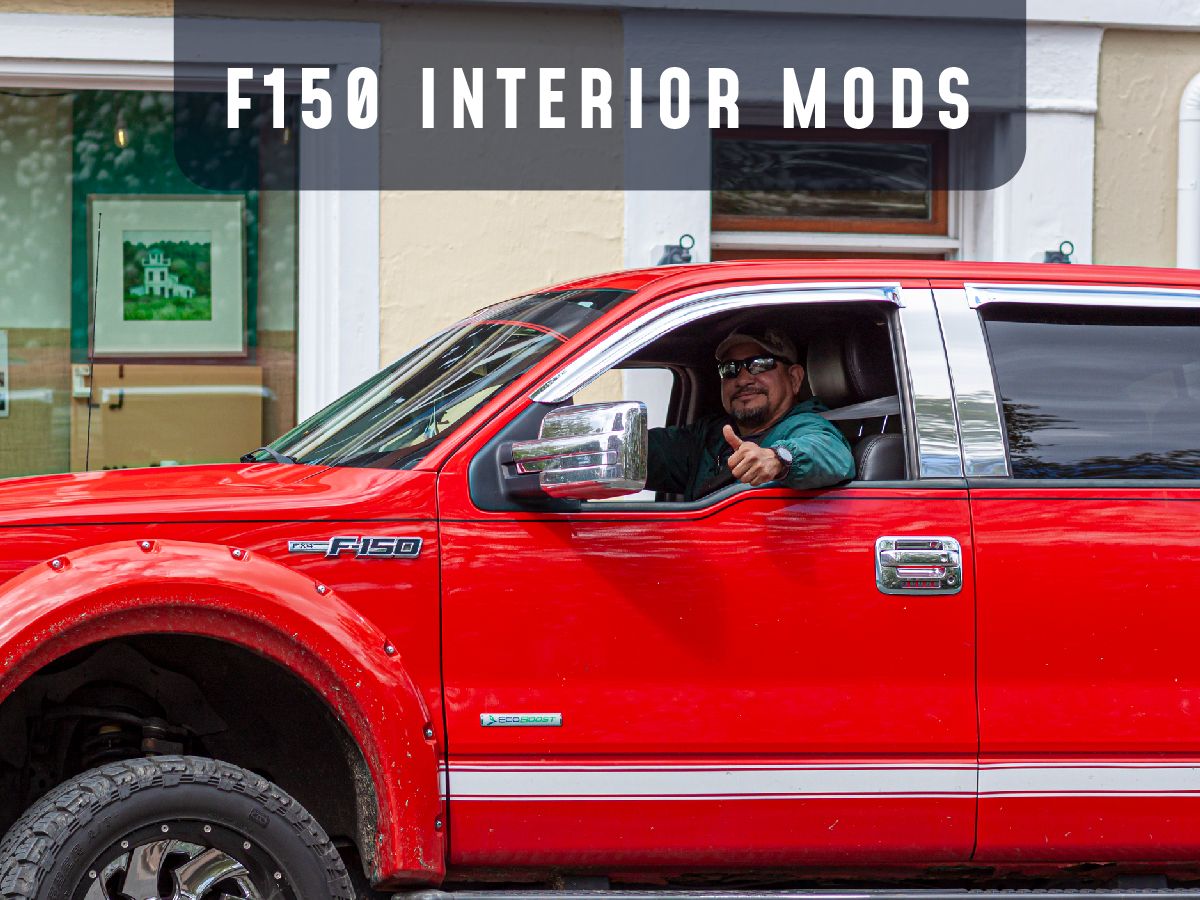Tailgate safety is important to think about no matter what environment you’re using your tailgate in. Tailgate safety refers to the safety procedures for activities that involve convening around a tailgate; for example, safely loading and unloading cargo, hitching and towing trailers, or hosting tailgating parties. These procedures are important to reduce incidence of accident, injury, or damages.
If you’re considering upgrading or replacing your tailgate, you should also consider upgrading it with a tailgate handle backup camera. Camera Source offers a wide range of high quality backup cameras, front and side cameras, and more to keep you safe on the road. Whether you’re on a construction site or pulling up for beers at the game, Camera Source has you covered with these top 14 tailgate safety tips.
Tailgate Safety: Risks, Concerns, & Hazards
The loading and unloading of cargo from a tailgate are activities which heighten the chance of accidents and injuries. Common hazards to be aware of when loading and unloading a tailgate are:
- Truck drive-away - When drivers leave before the loading or unloading is completed.
- Trailer creep - Unrestrained trucks creep forward due to movement entering and exiting the trailer.
- Falling cargo - Heavy objects, wrongly distributed weight, unsecure fastening, obstructed view.
- Water egress - Spills, wet loads, and incoming rain create slip, trip, and fall hazards.
- Poor visibility - Reduced awareness of one’s surroundings increases the chances of accident and injury.
- Clutter - The presence of clutter creates obstacles that make navigating loading and unloading difficult and unsafe.
- Elevation - Trips and falls from heights have the potential to result in more severe trauma.
These hazards can result in accidents, injuries, and damages. Some of the most common injuries related to tailgate loading and unloading include:
- Sprains and strains from improper lifting or handling of cargo
- Crushing injuries caused by colliding with a truck, falls from loading docks, or falling stacked materials
- Bruises and cuts
- Spinal injuries from improper loading, unloading, falls, or being crushed
- Head trauma from falling cargo
14 Tailgate Safety Tips
Tailgate safety means being aware of your surroundings and reducing the presence of hazards and potential accidents and injuries. Below are tips and tricks on how to do that.
1. Install a Backup Camera
Safety starts with being aware of your surroundings, therefore the first tailgate safety tip is to get a backup camera for increased awareness and visibility. Tailgates are handy for loading and unloading cargo, as well as providing a surface area to perform tasks, like tailgating for example. But a busted tailgate can put a real damper on that and other activities.
If a tailgate is damaged and fails during loading, people can be injured from falls or colliding with cargo. Even worse, a damaged tailgate fails during transit with a full load, releasing cargo onto the road. This is an opportunity for tragedy, with the potential to cause numerous damages and injuries to others.
A backup camera provides peace of mind and can prevent damages to your tailgate when reversing your vehicle. Being able to see what’s behind you and in your blind spots makes maneuvering through tight spaces like parking lots, camp sites, and neighborhoods easier and safer for everyone. It also allows for precision and accuracy of movement to be able to perform tasks like hitching a trailer or around obstacles. A backup camera will help you protect your tailgate and everyone around you.
Camera Source offers a huge selection of high quality automotive cameras and accessories (reverse, heavy duty, front and side, bluetooth, and more!) for all the popular manufacturers:
- Ford backup cameras
- GM backup cameras
- Dodge backup cameras
- Toyota backup cameras
- Jeep backup cameras
- Subaru backup cameras
- UTV cameras
- RV backup cameras
If you can’t find a camera that’s designed for your specific vehicle, that’s not the end of the road. We have universal cameras that will work well on many vehicles. Depending on what you’re looking for, there are plenty of aftermarket options that are very effective. An important factor to consider is how you want to mount the camera, as there are several backup camera mounting options available.
2. Keep it Lit
Similarly to using a backup camera, another safety strategy to increase awareness is to keep the area around the tailgate well lit. Don’t unload or load in the dark, especially if you have multiple people with you. It’s easier to trip, slip, or collide with people or objects when you can’t see your surroundings. A clear, well lit environment is one of the best barriers to prevent accidents and injuries.
Additional tailgate lighting can help you safely navigate the trailer and its surroundings at different times of day in different locations. Even some backup cameras come with lighting, while others have night vision. And some cameras use infra-red LEDs that will create a daytime like display even in complete darkness.
3. Stabilize
Trying to unload unstable cargo is one of the fastest tracks to injury. Make sure that the vehicle is stopped, braked, and stabilized when loading and unloading, especially in precarious situations. If the vehicle is on a slope, you’re more likely to experience difficulties or accidents and injuries while loading and unloading the tailgate.
4. Remove Hazards
The tailgate and surrounding loading areas need to be free from tripping hazards and debris. A messy or unclean area is a recipe for disaster. Of course, that won’t always be an option, but making sure that the loading vehicle is stabilized in a hazardous environment will decrease the likelihood of an accident.
5. Use Low Traffic Areas
Performing tasks at the tailgate in a crowded or uncontrolled environment like streets and parking lots can be dangerous. If possible, keep two-way traffic to a minimum in a loading area. People are much less likely to back into something or create an accident when there’s only one dimension to watch.
6. Know Your Tailgate
Most people know what a tailgate is— a board or gate at the rear of a vehicle that can be removed or let down for loading— but not everyone is familiar with the different forms they can come in to allow for different uses. There are four common types of tailgates based on how the door opens.
- Drop-down tailgate - The most common design for tailgates features a drop-down mechanism that unlocks the panel and lays it flat, extending access to the flatbed or trunk. You see this on most pickup trucks.
- Swing tailgate - Another tailgate mechanism uses side hinges to provide access to the back compartment. This design requires adequate clearance at the back of the vehicle in order to swing the door open completely. Less common, but you’ll see it on jeeps and sometimes other utility vehicles.
- Split tailgate - A split or double-hinged mechanism was designed for vehicles with tighter spaces that need access to the back, such as truck towing trailers. This type has two separate door panels hinged on each side of the vehicle, allowing the doors to be opened barn-style.
- Multi-way tailgate - Latest truck models feature gates that fold up and down, convert into a load stop, turn into a step, and double as workbenches to add functionality to the rear of the vehicle. These are multi-use and are coming into more and more prominence.
Each type of tailgate has its pros and cons. Being familiar with your tailgate can help you identify and prevent potential hazards when loading and unloading. You don’t need to worry about a drop-down tailgate closing shut during loading like a swing tailgate might. Similarly, you should think about how much weight is resting on a drop-down tailgate, but not so much with a swing tailgate.
7. Secure the Load
Unsecured loads falling from vehicles during transit have caused more than 200,000 accidents, resulting in approximately 39,000 injuries and more than 500 deaths. Until the cargo is secured, properly arranged, and safe for transit, loading is incomplete. Make sure you and anyone working for you is briefed and understands how to properly secure a load. This may include the employment of ropes, straps, D rings, hooks, fasteners, and multiple anchor tie points. Lastly, always make sure the tailgate is closed all the way and securely latched or locked to protect both your cargo and others on the road.
8. Handle Cargo Right
Not all loading has something to do with machinery. You should always practice proper handling for lifting, carrying, and moving heavy objects to avoid injury to yourself and others around you. Know your surroundings, lift with your knees, and identify where things need to go before lifting and make sure there are no obstacles between you and your destination.
The tailgate is a great tool for loading and unloading because it provides a stable surface to transfer objects between the truck bed and the ground. It acts as a stopping point or place to pause if you’re struggling to carry something, and helps prevent you from straining to lift heavy or irregular things in and out of the bed. Listen to your body and know when to take a break, and when to get assistance when lifting something heavy.
9. Know the Overhang
The amount of overhang a vehicle is allowed to have varies by state, so make sure you check what the allowed distance is in your state. If objects protrude from the tailgate, make sure it’s within the limit by measuring. According to the United States Department of Transportation's Federal Size Regulation law, commercial trucks' oversized loads are allowed to extend 3 feet in front of the vehicle, 4 inches on the side, and 4 feet in the rear.
For good measure, a good rule of thumb is to mark your load if it extends a foot or more to the front, side, or in the rear. A backup or side camera can be helpful in these instances of oversized loads to help you monitor their clearance and avoid collision.
10. Flag it Up
If you have an oversized load, make sure you mark it with a bright sign or flag. Getting into an accident on the road because of a visual impairment or collision caused by cargo hanging over the tailgate is just about the worst case scenario. Most flags are made of durable and weather-resistant material, and are brightly colored to keep hazards visible. It should be fairly easy to find one, and to adhere it to your load.
11. Extend the Bed
Instead of purchasing a new or used pickup truck with a longer bed length or a trailer, equip your current one with a bed extender. A bed extender allows for long cargo, like lumber, to be easily stored without fear of falling out of the tailgate. Installing a bed extender is one of the best ways to transform your truck into a highly functional workhorse. The ability to extend your truck bed by two to three feet allows you to carry and transport oversized items that otherwise wouldn’t fit.
12. Get a Rack
A bed rack, sometimes called a ladder rack, is a versatile tool that can be placed on the top of your truck bed for extra room and carrying capacity beyond the tailgate. This extends the length of a load you can safely transport by allowing you to take advantage of overhang limits in the front and rear of the vehicle.
13. Try a Tonneau Cover
A heavy-duty tonneau cover can provide another platform for you to secure loads. These covers can be used in conjunction with bed racks. Some covers have built-in cleats for you to use when tying down and securing your load. They can also provide a little extra assurance that contents won’t fly over the tailgate when the vehicle is in motion.
14. Don’t Overload the Tailgate
Don’t concentrate a heavy load in the center of your tailgate. This is the weakest point, and can create buckling or bending. Make sure you know your tailgate’s maximum weight limit and don’t exceed it. Whenever you load something heavy, make sure you evenly spread out the weight across the tailgate. For instance using an appropriate ramp and ramp placement for large heavy objects like appliances, lawn mowers, motorcycles, ATVs, and other vehicles. Make sure that your cables and fittings for the hardware on the tailgate are up to snuff as well.
Protect Your Tailgate with Camera Source
Scroll back to the beginning of the tips, and you’ll see the number one tip and trick for tailgate safety-- a backup camera. Installing a backup camera on your vehicle will help keep your eyes where they need to be whenever you’re hitching, hauling, loading or towing. Camera Source has you covered with the highest quality backup cameras and accessories. Get in touch with us today.










